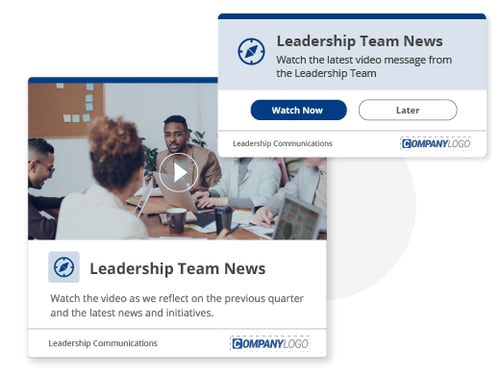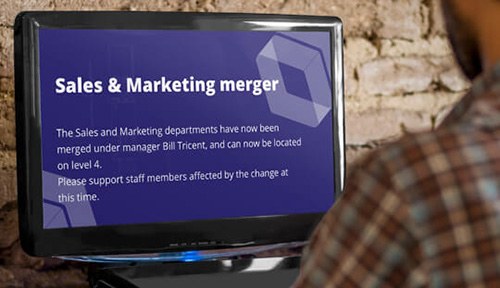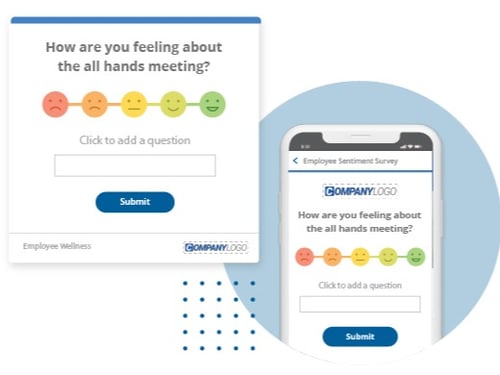
Updated August 10, 2022
Mergers and acquisitions, integrations, restructures and digital transformations are shaping workplaces across the globe. Change is essential for businesses to thrive and grow. And yet, 70% of change initiatives fail. Of these, nearly 40% are due to employee resistance.
In today’s competitive marketplace, organizations can’t afford to risk essential change initiatives failing. A global IT study revealed that 80% of businesses expect a negative impact on revenue within 12 months if they fail to complete digital transformation projects.
The Covid pandemic has has led to rising levels of employee burnout and events like the ‘great resignation’. There is no doubt workplaces are struggling with change fatigue.
It’s an issue communicators need to overcome. You must introduce strategies that overcome change resistance and turn fatigue into fearlessness. Here's how to ensure that even though change is inevitable, change fatigue doesn’t have to be.
Symptoms of Change Fatigue
To find out if employees are suffering change fatigue, there are some clear warning signs to look out for.
Disengagement – there’s a lack of input from employees, even when it’s requested of them; they stop giving feedback or asking questions.
Stress – employees are resistant to new projects or announced changes; they respond with fears or doubt.
Burnout – employee morale is low and attendance at teambuilding events are also low; they appear tired or comment often on their challenges.

Strategies to Overcome Change Fatigue
Follow these change communication strategies to address change fatigue and deliver successful change programs in your workplace.
1. Build Change Resilience
One way to protect employees against the fear of business change is to grow their confidence and trust. A negative response is only natural, but can be countered with a strong positive mindset.
Start building change resilience now. Acclimatize employees by openly signposting all change initiatives, however small. Demonstrate that business evolution is positive, not something to fear, and that staff will be involved every step of the way. Waiting until you have a major business transformation on the horizon is too late.
Building trust in this way enhances employee wellbeing and reduces the propensity for staff to exaggerate negative aspects of the change.

2. Implement a Communication Plan
Communication is the biggest influence on transformation success. At companies where management communicate openly about the transformation’s progress, employees are 8 times more likely to report a successful outcome.
So how do you ensure you get a successful outcome? Be transparent throughout each change initiative. Employees need context about what’s driving the change and what the process will be. Don’t allow them to be seduced by rumors at the water-cooler.
Creating a formal communication plan ensures nothing and no-one is overlooked. Include time-based milestones where key information must be delivered. Use a balanced channel mix, with internal communication tools that deliver high-impact at key moments and influence positive behavioral change throughout. Measure and refine the plan regularly.
3. Visualize the Future State
It’s all too easy to fixate on the process of change, rather than the purpose. When the journey is such a long and involved one, there’s a greater potential for losing sight of the destination.
It’s essential to compellingly promote the future state, particularly in your leadership communications. How will the change improve working conditions, efficiencies or satisfaction for everyone by replacing something suboptimal? Sell the positive outcome, not the change.
Encourage employees to visualize the outcome. Incorporate visual representations, particularly if the change is a less tangible one (such as to core computer systems). Doing this will increase positive perspectives and reduce the uncertainty that undermines employees’ willingness to accept change.

4. Improve Employee Engagement
Workplaces afflicted with low morale are at greater risk of employee change fatigue. Disengaged staff often feel disconnected with the company. Their lack of involvement can breed an isolation which is harder to redress.
Business leaders cite culture as the number one barrier to transformations. Introducing an ongoing employee experience program can be helpful in fostering a strong company culture. Look for opportunities to involve staff in areas related and unrelated to their role, celebrate team and individual achievements, and form closer ties through employee engagement apps.
Improving employee engagement also increases the potential for encouraging change advocates whose positivity can influence colleagues and lift overall employee sentiment.
5. Reframe the Change
Change the focus and tone of messaging from one of change to continual evolution. This distinction removes the ‘spikes’ in reactions, smoothing these out over time without diminishing the overall impact.
It’s a means of positioning change initiatives to reduce resistance without being misleading. Changes are seen in the context of wider company evolution, rather than as a series of major events which cause uncertainty and raise red flags for staff.
This strategy also helps equip the organization to sustain improvements over time, something that only 26% of workers say the transformations they’ve been involved with have been successful at.

6. Consider Emotional Resonance
As humans, we’re all emotional creatures. Changes in any part of our lives will affect us emotionally – both positively and negatively. Overcoming change fatigue involves understanding how employees’ emotional response (that is, the well-known four stages of shock, denial, anger and acceptance) affects their professional response.
During times of significant change, more than 80% of employees experience “cultural tensions.” Competing priorities they don’t know how to balance, and which can result in a negative emotional response. In this environment, communicators must anticipate and plan for expected tensions.
Emphasize stability and the areas remaining constant. This provides staff a reassuring lifeline and combats the potential for catastrophizing about ‘everything changing’.
7. Fix What Matters
Seeking to resolve the causes of employee change fatigue is to be commended. But don’t waste effort addressing matters that don’t matter to staff.
Think about how you can delve deeper to find out what actually concerns or frustrates them. There are a range of tools available to achieve this, depending on how visible or covert you wish the observations to be. Analysis of sentiments expressed over intranet social channels, multi-format employee surveys and anonymous staff interviews can all provide valuable insights.
Use the results to inform communication activities or to front foot concerns through targeted, reassuring leadership comms before they become issues.

Download the Ultimate
Change Communications Guide
Discover the elements of successful change, plan comprehensive change campaigns, overcome opposition and get the Engage to Excel change framework.
Download your copy now.

